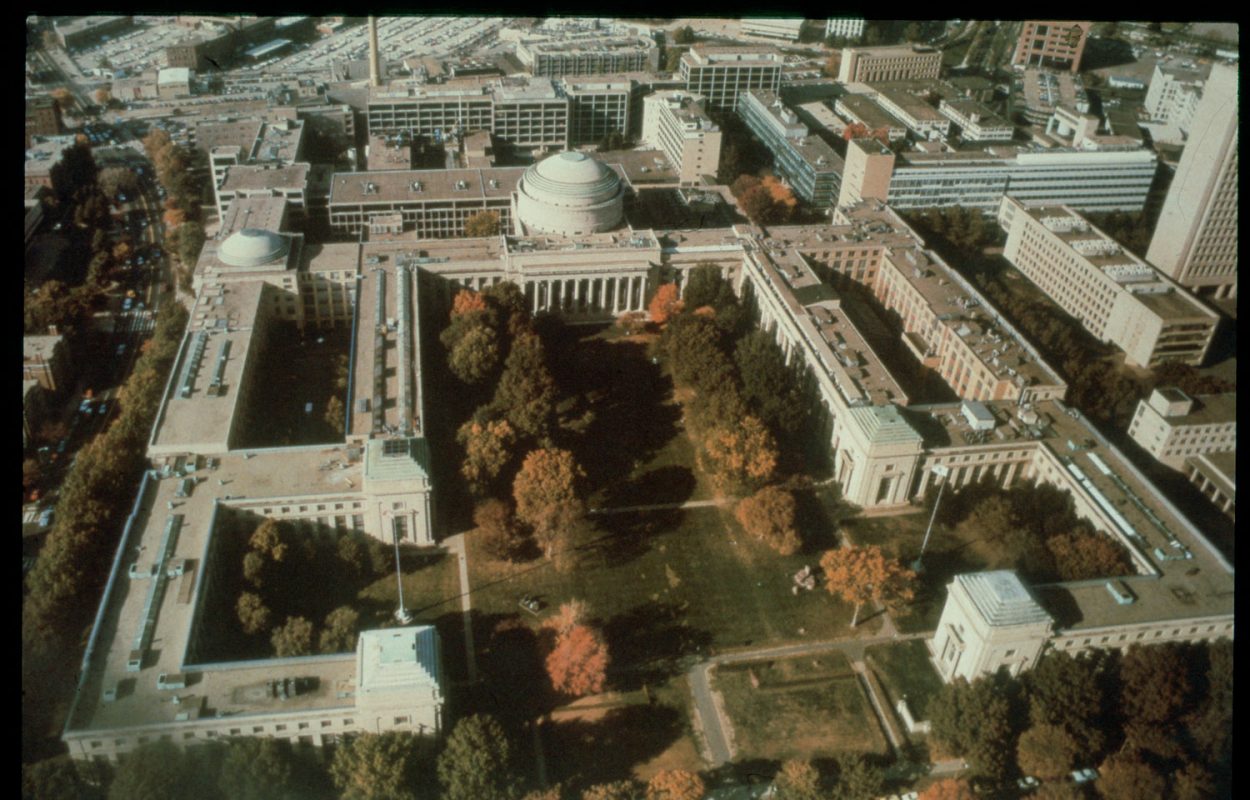Department of Biology
Heads of the department
| William T. Sedgwick | 1889-1921 |
| Samuel C. Prescott | 1921-1942 |
| Francis O. Schmitt | 1942-1955 |
| Irwin W. Sizer | 1957-1966 |
| Boris Magasanik | 1966-1977 |
| Gene M. Brown | 1977-1985 |
| Maurice Fox | 1985-1989 |
| Richard O. Hynes | 1989-1991 |
| Phillip Sharp | 1991-1999 |
| Robert T. Sauer | 1999-2004 |
| Chris Kaiser | 2004-2012 |
| Tania Baker | 2012-2014 |
| Alan D. Grossman | 2014- |
In 1871 a new course, Course VII, in natural history was established at the Massachusetts Institute of Technology under Professors Samuel Kneeland and Alpheus Watt. With the addition of William Thompson Sedgwick in 1883, the program became known for its work in microbiology and public health. At the same time, Sedgwick set up a curriculum, Course VII-B, designed to train students planning to enter the medical profession.
In 1889 a new Department of Biology replaced Course VII in natural history; the new department not only included premedical training, but also emphasized bacteriology and sanitary biology. Studies in water supplies, food supplies, and bacteriology of foods led to a change in the name of the department in 1911 to the Department of Biology and Public Health. During this period Samuel Prescott’s collaboration with William L. Underwood led to the development of procedures for the sterilization of canned foods which were basic to the development of the canned foods industry.
In 1936 a committee composed of MIT President Karl T. Compton, Vice President Vannevar Bush, and Professor John W. M. Bunker proposed that MIT develop a new type of biology–biological engineering–which would utilize basic knowledge of physics, mathematics, and chemistry, as well as several fields of engineering. Training in public health was abandoned in 1942 and the department name was changed to the Department of Biology and Biological Engineering. As teaching and research related to food continued to develop, a separate Department of Food Technology was established in 1944, and the department’s name changed once again to the Department of Biology. The department was reorganized in 1955 and molecular biology was further developed with emphasis on biophysics, biochemistry, microbiology, and physiology-developmental biology. A strong program for post-doctoral training of M.D.s as well as Ph.D.s was developed.
In 1962 Francis O. Schmitt organized the Neurosciences Research Program, which emphasized an understanding of brain function based on neurophysiology. The program remained at MIT until 1982 when it moved to Rockefeller University. As the research program continued to expand, a clinical research center was established in 1964 to provide facilities for faculty to conduct research with human patients and volunteers, and in December 1965 a new center for life sciences was established with the dedication of the Whitaker Building (building 56).
Periodic reviews of the curriculum kept the programs current with new developments in the discipline, and more classes in genetics and biochemistry were added to the course in the late 1970s and 1980s. During the 1970s and the 1980s increased research in cell and molecular biology, microbiology, and immunology resulted in the establishment of the Center for Cancer Research (ca. 1972), first directed by Salvador Luria, and in the late 1970s the Program in Health Sciences and Technology, later the Whitaker College of Health Sciences and Technology. In 1982 the Whitehead Institute of Biomedical Research was established at MIT; first headed by David Baltimore, it greatly expanded the number of faculty in the department and strengthened the research program. In the late 1980s attention was focused on remedying the department’s space problems, and in 1994 a new biology building opened (building 68), providing modern facilities for teaching and research programs in human health and disease, cancer, and AIDS.
http://web.mit.edu/biology/www/
Prepared by the Department of Distinctive Collections, MIT Libraries
December 1995; updated 2012, April 2020
